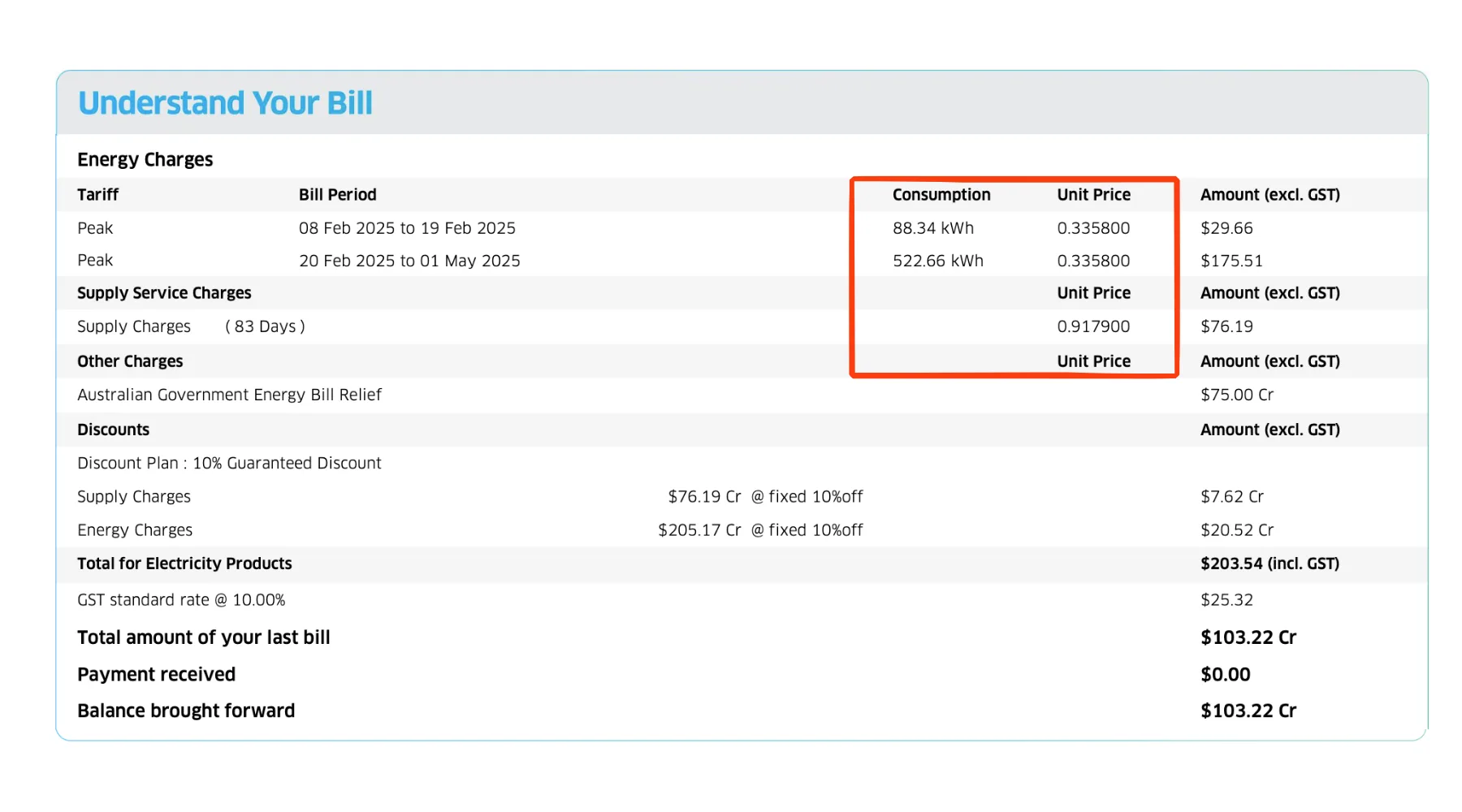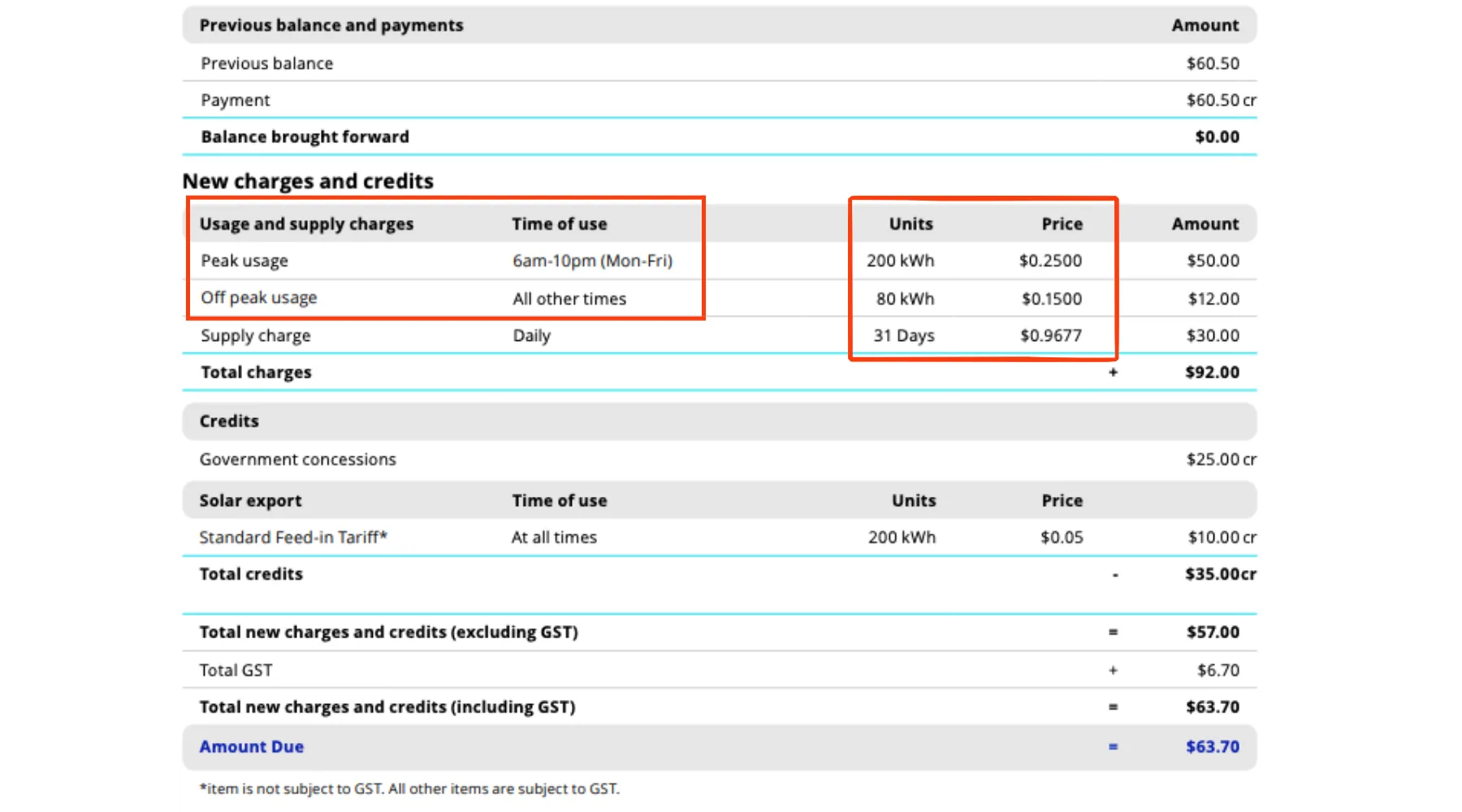Key takeaways
- The average cost of electricity, measured in kilowatt hours (kWh), varies between each state and territory in Australia.
- You can expect to pay around 33 cents per kWh on average, with South Australians facing the highest rates.
- How much you end up paying on your energy bill overall will be influenced by factors such as your power consumption, where you live, your provider and the type of plan you're on.
Average price of electricity per kWh by state
Like most infrastructure, electricity supply and pricing rules are partly set by each state or territory. This helps explain why prices differ depending on where in the country you live.
After energy is generated and distributed, it's down to providers to sell the plans on to you and get your connection set up.
If you're paying much more for power compared to the prices in the table, it could be time to compare energy providers and switch.
Good to know: Usage rates are cents per kWh (c/kWh), the cost for each unit of electricity you use while supply charges are shown as cents per day (c/day), a daily fee for being connected to the grid.
Paying more than the average rate or want a better deal?
Compare energy plans to see if you can switch and save.
Average price of electricity per kWh by provider
Here's a look at what some of the popular energy providers are charging on average across their single rate plans.
How are electricity prices in Australia calculated?
Electricity prices in Australia are influenced by several key factors, which together determine both your supply charges and the rate you pay for each unit of power (per kWh). Broadly, these include:
- The state or territory you live in, and which energy distributor services your area
- The type of tariff you're on (for example, single rate or time of use). We go into this in more detail further down
- How much power you use
- The mix of generation sources in your state or territory (such as coal, gas or renewables)
- Network charges, which cover the cost of delivering electricity to your home
Retailers combine these costs and set their own pricing (within regulated limits in some states), so what you pay can vary depending on your provider and plan.
How do I read my energy bill to work out the cost of electricity per kWh?
Most people's energy bills are typically just 2-3 pages long. The main part to look for if you want to find your costs per kWh is the section detailing your charges.
Example of a bill for a customer on a single rate tariff plan
The red outline shows the energy consumption for the billing period, and the unit price shows how much you're paying in cents per kWh.
On a single rate plan, the price stays the same no matter when you use electricity.

Example of a bill for a customer on a time of use tariff
The first red outline shows what times you'll be charged for using electricity during peak and off-peak hours. The second red outline shows energy consumption and how much you're paying in cents per kWh.

How can I find the best kWh rates for my household?
If your energy bill is higher than usual or you just want the cheapest kWh rates for your home, it's a good idea to compare energy plans and find out which provider is offering the cheapest rates.
Beyond price, consider:
- Perks and discounts. Does the provider offer sign-up deals or other bells and whistles such as a rewards program, streaming freebies or frequent flyer points?
- Customer service and features. Consider online reviews, customer support options and whether there's an app to manage your plan and track energy usage.
Frequently asked questions
Sources
More guides on Finder
-
Time of use vs single rate tariff
Can you save money by using energy at certain times of the day on a time of use plan?
-
Red Energy vs Origin
Red Energy vs Origin Energy: Compare rates, plans, features and incentives in four states.
-
Origin vs ENGIE (formerly Simply Energy)
Origin vs Simply Energy: Which brand offers better electricity rates in your state?
-
AGL vs EnergyAustralia
AGL and EnergyAustralia are closely matched on price but AGL fares slightly better for additional perks such as bundling offers.
